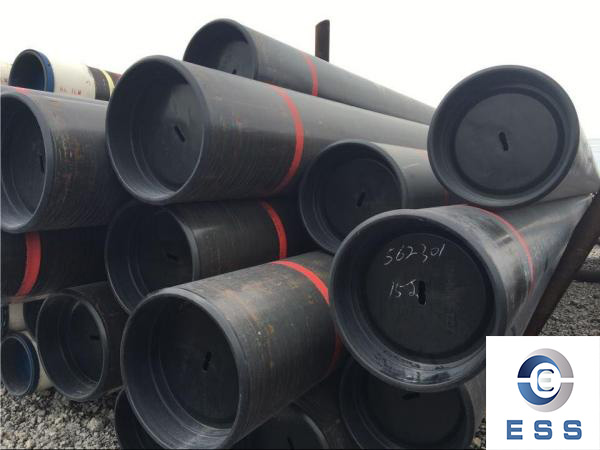How to deal with the inner fold of hot-rolled smls pipe?
Inward bending is the main quality defect in the production of hot-rolled smls pipes. It occurs during the piercing process and cannot be eliminated. The inner fold is the fold of the inner surface of the smls pipe. The appearance is characterized by scale-like layers, similar to closed curves, and also has irregularly shaped folds. Folding is due to the poor quality of the metal, which is produced during the rolling process. When the non-metallic inclusions are excessively segregated, there will be pores concentrated around the metal inclusions, which will split and form inner folds during the piercing process. On the sizing machine it appears in scales or other shapes.

In short, the unqualified quality of rolled smls pipe round billets is mainly due to the high degree of metal pollution caused by non-metallic inclusions and harmful substances. In addition, strip segregation during casting also has a very important influence on billet quality. Banding segregation largely depends on the chemical composition of steel, heat preservation state and cooling rate. The increase in the content of harmful elements in steel leads to an increase in its concentration in the segregation zone, thereby forming segregation. An increase in carbon content also increases the segregation of impurities, especially manganese.
The following factors will also affect the infolding of the smls pipe during the piercing process
1. The influence of piercing deformation parameters on the inner folding of hot-rolled smls pipes
The folding of smls pipes also has a certain relationship with the piercing process. The parameter setting of the piercing process and the tool design have certain influence on the folding. The cracking of the central area of the tube blank is not only related to the total down pressure in the roller and the total down pressure before the top, but also related to the local down pressure when the tube blank is turned over to the semicircle.
2. The influence of piercing temperature on the inner folding of hot-rolled smls pipe
As the temperature increases, the plasticity of the material increases, and the critical pressure increases with the increase of temperature. However, if the tube blank is cast at the optimum casting temperature, when the piercing temperature changes within a certain range, the inner fold will not change significantly.
3. The relationship between heating time and inward folding of hot-rolled smls pipe
At a certain temperature, prolonging the heating time has little effect on inner folding, but the number of outer folding increases obviously. The reason is that the longer the heating time, the more serious the grain growth and the more obvious the surface layer, which will deteriorate the microstructure and produce outer folding.
4. The effect of tools on the inward folding of hot-rolled smls pipes
For example, the use of a tip nose can reduce the formation of its own cavity and improve the quality of the inner surface. In addition, the shape of the tip also has a certain impact on the quality. The tapered tip will increase the pressure from the tip to the hole, which will affect the waste water pipe. There are bad effects; the spherical head can reduce the pressure of the waste liquid pipe along the feeding direction and improve the quality of the waste liquid pipe. The optimum shape of the head should ensure the same wall thickness down the length of the deformation zone.
Finally, in order to improve the quality of the inner surface and reduce the inner folding of the hot-rolled smls pipe, we should start from the following aspects:
1. Ensure the uniformity of the structure, reduce segregation, and prevent excessive concentration of non-metallic inclusions during billet casting;
2. Optimum casting temperature to increase critical pressure;
3. Ensure the heating temperature of the blank before piercing, reduce the amount of pressure before the top, and improve the thermal quality.













 Eastern Steel Manufacturing Co.,Ltd not only improve product production and sales services, but also provide additional value-added services. As long as you need, we can complete your specific needs together.
Eastern Steel Manufacturing Co.,Ltd not only improve product production and sales services, but also provide additional value-added services. As long as you need, we can complete your specific needs together.










